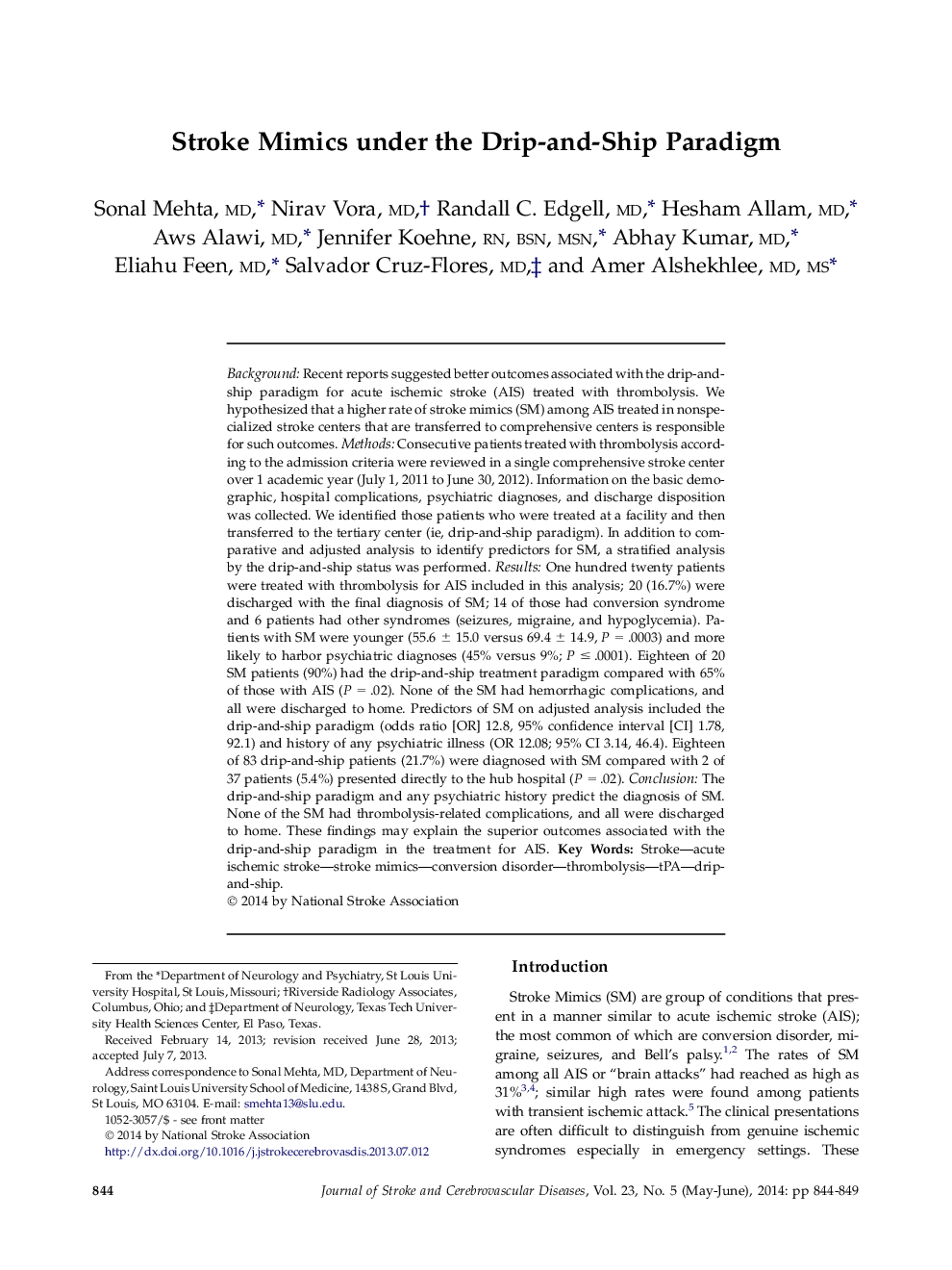| کد مقاله | کد نشریه | سال انتشار | مقاله انگلیسی | نسخه تمام متن |
|---|---|---|---|---|
| 5875070 | 1145003 | 2014 | 6 صفحه PDF | دانلود رایگان |
BackgroundRecent reports suggested better outcomes associated with the drip-and-ship paradigm for acute ischemic stroke (AIS) treated with thrombolysis. We hypothesized that a higher rate of stroke mimics (SM) among AIS treated in nonspecialized stroke centers that are transferred to comprehensive centers is responsible for such outcomes.MethodsConsecutive patients treated with thrombolysis according to the admission criteria were reviewed in a single comprehensive stroke center over 1 academic year (July 1, 2011 to June 30, 2012). Information on the basic demographic, hospital complications, psychiatric diagnoses, and discharge disposition was collected. We identified those patients who were treated at a facility and then transferred to the tertiary center (ie, drip-and-ship paradigm). In addition to comparative and adjusted analysis to identify predictors for SM, a stratified analysis by the drip-and-ship status was performed.ResultsOne hundred twenty patients were treated with thrombolysis for AIS included in this analysis; 20 (16.7%) were discharged with the final diagnosis of SM; 14 of those had conversion syndrome and 6 patients had other syndromes (seizures, migraine, and hypoglycemia). Patients with SM were younger (55.6 ± 15.0 versus 69.4 ± 14.9, P = .0003) and more likely to harbor psychiatric diagnoses (45% versus 9%; P ⤠.0001). Eighteen of 20 SM patients (90%) had the drip-and-ship treatment paradigm compared with 65% of those with AIS (P = .02). None of the SM had hemorrhagic complications, and all were discharged to home. Predictors of SM on adjusted analysis included the drip-and-ship paradigm (odds ratio [OR] 12.8, 95% confidence interval [CI] 1.78, 92.1) and history of any psychiatric illness (OR 12.08; 95% CI 3.14, 46.4). Eighteen of 83 drip-and-ship patients (21.7%) were diagnosed with SM compared with 2 of 37 patients (5.4%) presented directly to the hub hospital (P = .02).ConclusionThe drip-and-ship paradigm and any psychiatric history predict the diagnosis of SM. None of the SM had thrombolysis-related complications, and all were discharged to home. These findings may explain the superior outcomes associated with the drip-and-ship paradigm in the treatment for AIS.
Journal: Journal of Stroke and Cerebrovascular Diseases - Volume 23, Issue 5, MayâJune 2014, Pages 844-849
